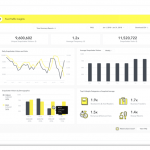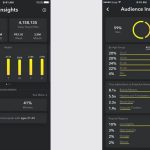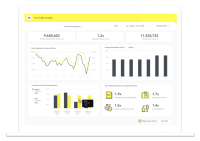Why Snap Should Release Its Diversity Numbers
With Snap’s IPO (March 19, 2017), the secretive company has opened itself up to public scrutiny—which involves disclosing its financial statements, legal problems, stock ownership, executive compensation and requires it to hold shareholder meetings. But one aspect of the company remains wrapped in a shroud of mystery—the gender and racial diversity of its workforce. In recent years, under pressure from shareholders and critics, tech giants from Facebook and Apple to Google and Twitter have started issuing diversity reports, and even non-public unicorns like Uber have said they will soon release their own report in a few months.
But not Snap, which is led by cofounders Evan Spiegel and Bobby Murphy and whose executive team is largely male. Its lack of transparency on the issue raises plenty of questions about its true commitment to a diverse workforce.
Buried inside Snap Inc.’s S-1 is an innocuous line about diversity: “We fundamentally believe that having a team of diverse backgrounds and voices working together is our best shot at being able to create innovative products that improve the way people live and communicate.” But it also seems to resist the idea of quantifying this diversity: “That’s because we believe diversity is about more than numbers. To us, it is really about creating a culture where everyone comes to work knowing that they have a seat at the table and will always be supported both personally and professionally.”

Snap’s S-1 says that it has invested in inclusion and professional development programs as well as outreach. But it’s hard to know how committed it is to diversity without making those numbers public. Data tells us that creating a place where people of different backgrounds, ethnic or otherwise, can convene and collaborate is crucial to retaining a diverse workforce.
“Focusing on improving culture before improving diversity numbers isn’t necessarily a bad thing,” says Stephanie Lampkin, CEO and founder of blind recruiting software Blendoor. She notes that a review of more than 1,300 Snapchat employee profiles on LinkedIn shows that Snap’s diversity is on par with other tech companies in Silicon Valley—which is to say it’s not very diverse. And while that may not be surprising within the industry, she says it is surprising for a company that operates in Los Angeles, a city known for having as many varieties of people as it does koi ponds in backyards.
“If Snapchat focuses only on culture, ignoring the fact that their company doesn’t reflect the majority of their content creators, they will be the next Twitter,” she adds. Despite having a diverse user base, Twitter’s employees are largely white and male despite numerous pledges to make Twitter more diverse over the last two years. In 2015, one of the company’s engineering managers, Leslie Miley, wrote in a blog post that part of the problem at Twitter stemmed from thinking the problem could be solved with tech rather than through a more complex workplace culture shift. Miley has since left the company. And this year, while Twitter has shown it’s capable of growing the number of female workers in its ranks, its percent of minority workers has only slightly increased. Lampkin argues that if Snap doesn’t focus on numbers as well as culture, it will suffer the same stagnation Twitter has.
Gauging hiring practices—from the number of minority candidates recruited to how many make it to the final round—and measuring retention of non-white, non-male, non-CIS employees is key to understanding whether your inclusion programs are truly effective.
“Without mile markers so to speak–that is, specific numbers of employees in different demographic groups at different levels–we have no idea how far they’ve come nor their pace,” says Freada Kapor Klein, founding partner of Kapor Capital, says of Snapchat. “A startup would never say that their goal is profitability but they don’t track their revenues.”
Of course, it is in Snap’s best interest to laud diversity. For one, workforces with employees representing a wide spectrum of backgrounds perform better. But secondly, Snapchat aims to reach a wide audience. In order to do that, Snapchat needs employees who together can truly understand a diverse group of users–not all of whom have the same exact needs and interests. For instance, Snapchat has on multiple occasions introduced racially insensitive facial filters— like a Bob Marley filter on April 20th and an East Asian caricature. Plus, some users feel that too many of the face-altering filters lighten skin and prioritize white features.
“If you’re only making a product for white guys in their 30s, then only employing white guys in their 30s…seems fine,” says Sara Chipps, CEO of Jewelbots. “But that doesn’t seem to be what Snapchat wants to do.”
And though Snapchat has expressed interest in both attracting and retaining employees that don’t fit the typical Silicon Valley sugar-cookie mold, the fact that it hasn’t released any information about its workforce makes its talk of creating a diverse culture ring hollow. Especially since the company hasn’t publicly outlined diversity goals of any kind. The benefit of disclosing diversity figures at companies such as Google, Facebook, Twitter, and Pinterest is that job candidates have better insights into whether those tech companies are really for them.
“It’s important to know that [as a minority] I’m not going to represent a token for you or I’m not going to be in charge of making your team diverse when you haven’t made it a priority in the past,” says Chipps. By tracking progress out in the open, a company may actually attract the kind of candidates it wants.
Making the tech industry more reflective of the population it serves isn’t an easy task. But the conversation and path to making your workforce more diverse is as important as getting there. Doing so will require intention, commitment, and an openness to failed initiatives as well as successful ones. That means sharing diversity numbers, information about inclusion programs, and facilitating open dialogue on this subject.
“It is difficult to move the needle on the segregation of our industry if we are not actively being open and learning together,” says VP of programs at Code2040 Karla Monterroso. “It is important for companies, especially companies like Snap with this level of visibility, to model what it means to lead on the vulnerability and ambition it takes to create inclusion.”
Fast Company , Read Full Story
(45)














